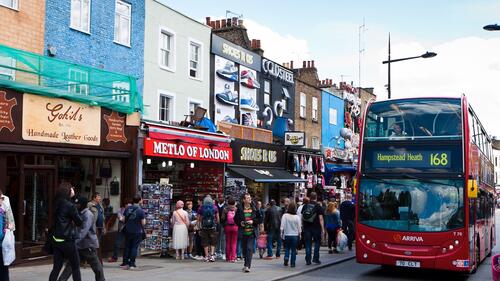Punk rock swept the world in the mid-1970s with hot spots in London, New York, Los Angeles, and Brisbane. Some of the most notable punk bands of the era cut their teeth on the music scene in London — rocking and rioting their way through the streets of Soho for the better part of a decade. Anarchy took center stage and with it came a daring display of facial piercings, mohawks, leather jackets, and studded belts. The punk rock crusade rattled every quiet street and brought a nation of misfit children to their feet. Nowadays, many of the old haunts and venues have been upgraded and repackaged, but the underlying heartbeat of the movement can still be heard if you know where to listen for it.
Tin Pan Alley
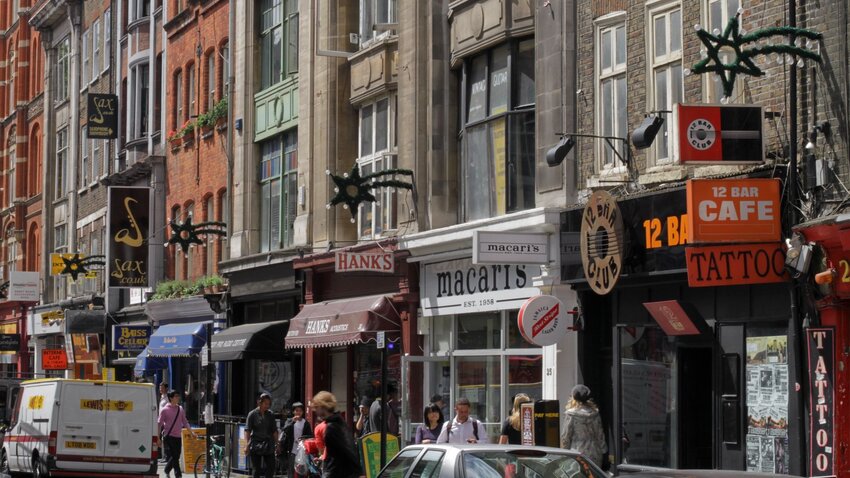
Taking a walking tour of punk rock London is relatively easy to accomplish without the assistance of a guide. You’ll need a reliable map and a good sense of direction as you make your way to each location, but everything is simple to pinpoint once you know where to go. Start by taking a stroll down Tin Pan Alley, one of the focal points of the punk phenomenon. Tin Pan Alley is technically a nickname for Denmark Street in London, but you’ll know you’ve made it when the street becomes inundated wth signs for various music shops and clubs.
Pop into any of the shops to pick up your favorite punk record before heading to No.Tom Guitars. You’ll find yourself in the middle of this once raucous music scene, and the selection of vintage and classic guitars will make you want to embrace your inner Joe Strummer. Once you’ve gotten your fill, head around back to No. 6 Denmark Street and step into the past. In 1975, Sex Pistols’ manager Malcolm McLaren rented the space to serve as part-studio, part-home base for the band. Some of the Sex Pistols’ earliest demos were recorded in the No. 6 Denmark Street studio, including the tracks “Anarchy in the U.K.” and “Pretty Vacant”. And if that wasn’t cool enough, the iconic album cover for Pink Floyd’s “Dark Side of the Moon” was designed in this same space.
The area surrounding No. 6 Denmark Street is easily recognizable thanks to the graffiti depicting Johnny Rotten, Malcolm McLaren, and Sid Vicious’ girlfriend Nancy Spungen. Be sure to devote an entire afternoon to the Tin Pan Alley portion of the tour to really soak in all the sights and sounds of this infamous area.
The 100 Club
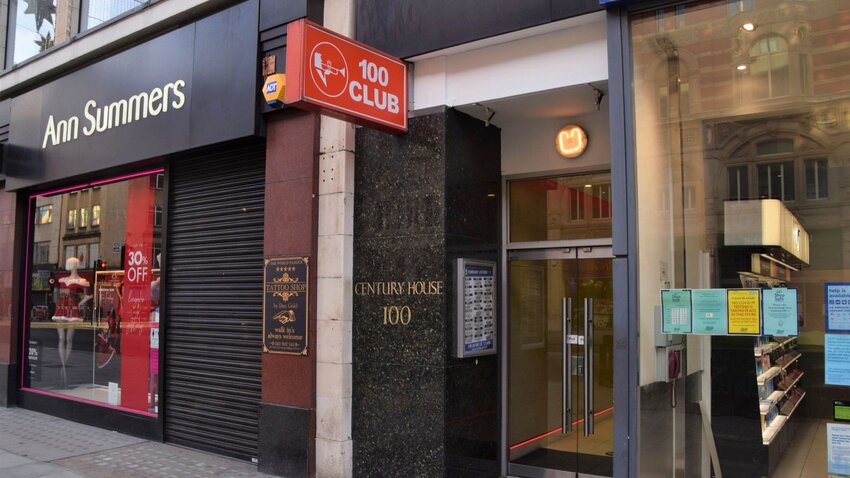
The 100 Club, located at 100 Oxford Street in London, became host to the first international punk rock festival in September 1976. The festival propelled numerous bands into the mainstream by drawing attention to the anarchic sounds of the movement. The lineup for that 1976 festival included the likes of Sex Pistols, The Clash, The Jam, Siouxsie and the Banshees, Buzzcocks, The Damned, and The Stranglers. While many of these bands are household names today, they were merely blips on the radar before The 100 Club propelled them into stardom.
The club has been in operation since 1942 and still hosts music gigs to this day. Over the years, they’ve served as a pit stop for a number of bands on their road to fame, including Black Flag. The Rolling Stones played an impromptu concert at the 100 Club in 1982 and returned several times throughout the 80s. Effectively becoming the nucleus of London’s punk rock hub, the venue is considered one of the most important in the city, and thus requires a visit on any trip to London. The interior looks much the same as it did in the 1970s, so when you walk through the front door, you’ll get the full effect of what life was like back then.
Roundhouse
Another popular music venue, Roundhouse, was similarly important to the development of punk in London. The Clash played their fifth show ever here, and the venue went on to see performances from acts like Patti Smith, The Ramones, the Sex Pistols, The Damned, and The Jam. Prior to the surge of punk bands in the area, The Doors, Jimi Hendrix, David Bowie, and other significant musicians passed through these hallowed halls. Located on Chalk Farm Road in Camden Town, you can easily take the Tube to access this location. Though Roundhouse underwent restoration in the late 1990s and early 2000s, the venue is still a key contributor to London’s music industry and holds onto the secrets of punk’s past.
430 King’s Road
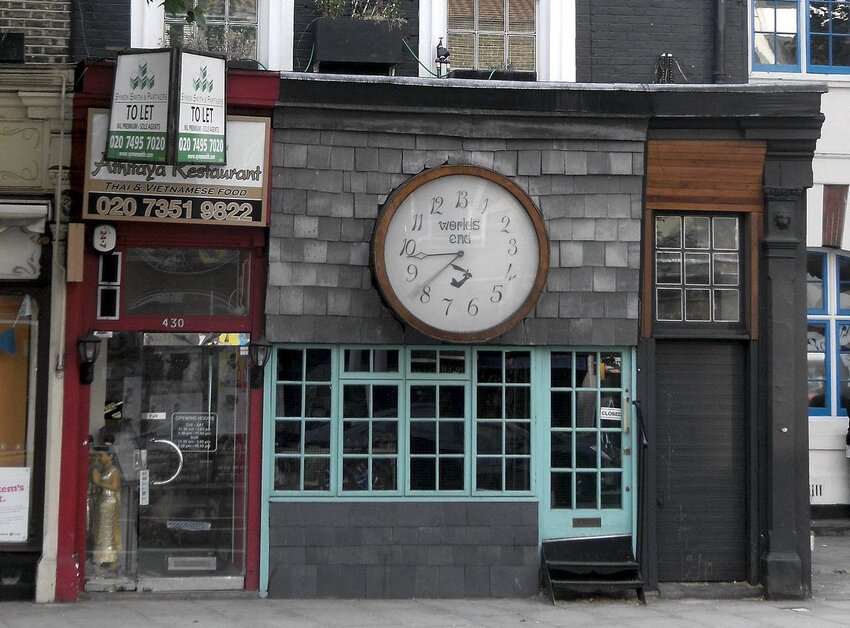
Vivienne Westwood, one of the most famous fashion designers in the world, made a name for herself by bringing punk rock designs to the forefront of the fashion industry. During the 1970s, Westwood and Malcolm McLaren opened a boutique on 430 King’s Road in London called SEX. The pair specialized in punk clothing and provided outfits of armor to rambunctious rockers. McLaren’s Sex Pistols, as well as Siouxsie Sioux, were frequent buyers of Westwood’s original designs. The shop became synonymous with punk and its garb adorned a generation of Londoners.
While SEX has undergone several changes over the decades, Westwood still operates the shop located at 430 King’s Road. Known nowadays as World’s End, the store was designed by Westwood and McLaren, among others, to be reminiscent of the Old Curiosity Shop immortalized by Charles Dickens. Be sure to swing by on your way through London to browse the selection of available items and bag yourself a truly unique souvenir.
Honorable Mentions
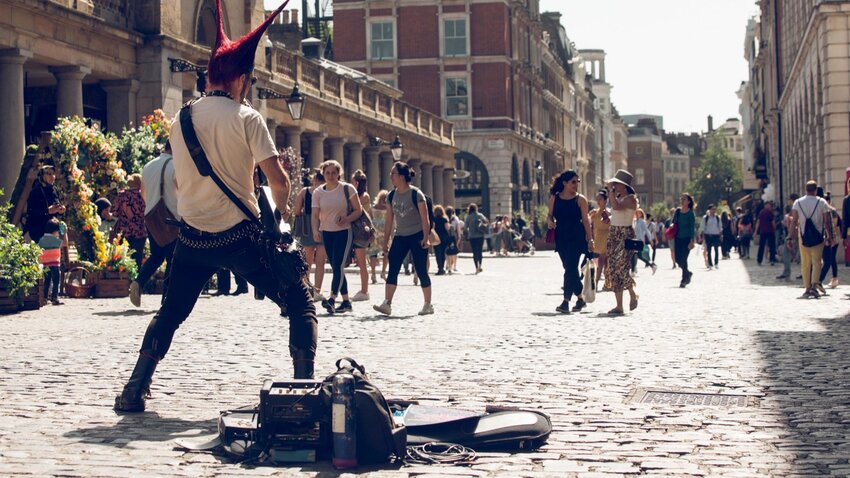
To conclude your punk rock tour of London, you’ll want to visit these important locations. Hope and Anchor, a pub in Islington, hosted gigs by the Ramones, Joy Division, the Pogues, and even the Police. While you’re in the neighborhood of Islington, swing by Screen on the Green where The Clash, Buzzcocks, and the Sex Pistols all played in 1976. The Marquee in Soho (the area of London that became the center of the punk movement) provided the backdrop for several Sex Pistols videos.
Johnny Rotten and Sid Vicious of the Sex Pistols, along with Syd Barrett of Pink Floyd, once shared an apartment over at Chelsea Cloisters, where you can still rent rooms longterm. Camden Market has been a punk rock haven for decades, and The Clash were photographed here for their first album. Finally, the Roxy in Covent Garden, Vortex in Soho, and Dingwalls (known now as Koko) were all popular music venues during this period. Stop over at each place and snap a picture or two outside to share with family and friends.
Photo by William Rodrigues dos Santos

